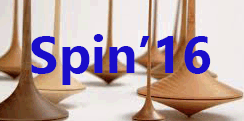Speaker
Description
Lattice quantum chromodynamics is well suited for evaluating matrix elements of local operators and so naturally provides the moments of distribution functions as defined through the operator product expansion procedure. Unfortunately, the reduced symmetry of the (hypercubic) lattice means that as the continuum limit is approached, the matrix elements of higher spin operators evaluated on the lattice become severely contaminated by contributions from lower dimensional operators, with coefficients that diverge as inverse powers of lattice spacing, requiring unrealistically high statistical precision to reliably isolate the desired contributions. In this talk, I will present a proposal for devising and implementing a new lattice operator that is defined over a length scale much smaller than the hadronic scale but much larger than the lattice spacing, and has well-defined rotational properties in the continuum limit. Within lattice perturbation theory, this operator can be shown to evade the power divergence problem. Numerical investigations are underway to verify the advantages of such operator in calculating higher moments of parton distribution functions.
